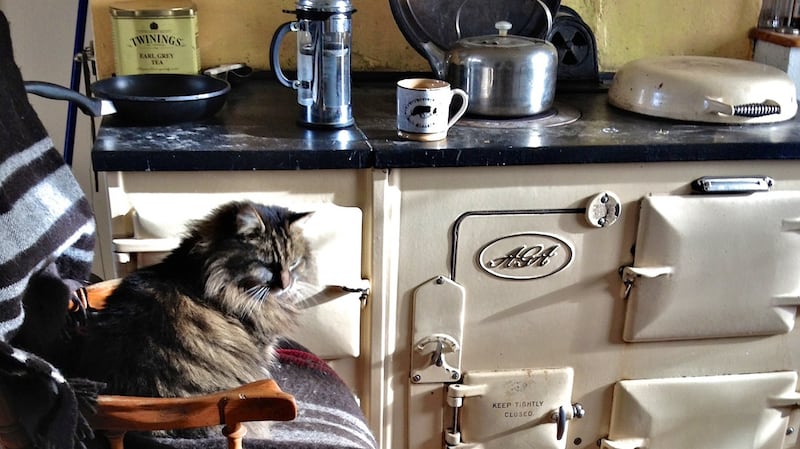We had over 57 varieties of animals at home when I was growing up. The figure seems extraordinary now but we once did a count. Tiny gerbils, elusive hamsters, plodding terrapins, comical ducks, fat pigs and fan tailed doves, Milly the Goat, Augusta the parrot … and, of course, all of the dogs and ponies and horses. We lived and breathed animals as children. Central to the entire Dr Dolittle project was the Aga, the lifesaver.
I can remember racing downstairs in the mornings to check the bottom left oven of the Aga to see if an abandoned fledgling, or diminutive hedgehog, had survived the night following our rescue operation the day before. If an animal was in shock, and it could fit in a cardboard box filled with straw, the Aga was always regarded as the natural place for recovery.
The Aga cooker was invented by the Swedish scientist, Gustaf Dalén, when he was blinded by an explosion in 1912, the same year he won the Nobel Prize for Chemistry. With little option but to stay at home, Dalén observed that day-to-day housework was such a monotonous chore for his wife. And so, he designed an all-in-one cooker and laundry dryer to alleviate her daily labour. The first solid-fuel Aga - black topped with white front panels - was introduced to Ireland in 1929. Known for its longevity, many Agas continued to operate for over 50 years after they left the Coalbrookdale foundry in Shropshire, where Agas are still made today.
A wonderful example can be found at majestic Huntington Castle in County Carlow, where the Aga was installed during the 1940s. To this day, it continues to boil kettles, bake potatoes and heat the dachshunds and lurchers lazing on beanbags nearby.
Aside from the glossy images that Aga themselves promote, this oven really does so much more than cook food. It is a creature of many parts. Heating the kitchen and the surrounding rooms above and beyond. Drying clothes on a custom-made rack, which sits neatly on top of the hobs. Soaked shoes are stuffed with newspaper and left to dry over-night. After squeezing out the breakfast orange juice, or lemons for our evening tipple, the pieces of peel can be thrown into the bottom oven where they magically turn into homemade firelighters, while also giving the kitchen a hint of citrus aroma. Every so often, we put boxes of damp moss on top overnight, which becomes wonderfully soft bedding for the hens’ laying boxes.

This is an oven in which meringues can bake in the bottom over for 48 hours without burning and where cooking can turn into an obstacle course, straddling sleeping dogs rather than waking them up when pan frying. What’s more, you won’t even need a toaster, a tumble drier, or an electric kettle.
I think the Aga cooks things in a special way, with its heavy iron castings, absorbing and retaining heat, so that the food is somehow all the more flavoursome and succulent. Piping hot twenty-four hours a day, a cup of tea always at the ready and a place to sooth the soul. This creation is the ultimate for practical living, and I’m with Gérard Depardieu when he says, “cooking with an Aga is fabulous, it allows for little mistakes and it’s easy to prepare dishes for 10 and still be around for your guests.”

















